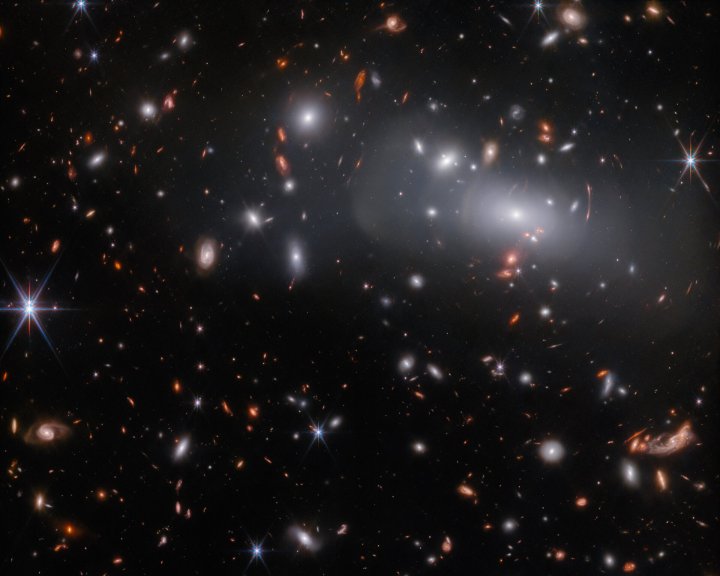Since the start of science operations of the James Webb Space Telescope in July last year, we’ve been treated to a flood of images showing space targets from nebulae to deep fields. This month, Webb researchers shared a new image captured by the telescope’s NIRCam instrument which shows a both gorgeous field of galaxies and an important astronomical phenomenon called gravitational lensing.
The image features a huge galaxy cluster called RX J2129, located 3.2 billion light-years away, which is acting as a magnifying glass and bending light coming from more distant galaxies behind it. That’s what is causing the stretched-out shape of some of the galaxies toward the top right of the image.

One of the galaxies being lensed is particularly notable because it contains something special. Toward the top right, the same galaxy is imaged three times, due to the lensing effect. Within this triple-lensed galaxy is an exceptionally bright event, a Type Ia supernova. These occur when a small but dense star called a white dwarf is part of a binary system with another star and pulls material away from its companion. This continues until there is too much mass in the white dwarf and it collapses, then it explodes in a hugely bright flash of light.
The light from these Type Ia supernovae is important for two reasons: firstly, it is so bright that it can be seen even from another galaxy, and secondly, it is (usually) of a consistent luminosity. That means that astronomers can look at a very distant Type Ia supernova and accurately work out how far away it is, which makes it useful for measuring cosmological distances. These objects are called “standard candles.”
This image captures an extremely distant Type Ia supernova, and that is useful to tell researchers how strong the gravitational lensing effect must be. To confirm their results, researchers also collected data using another of Webb’s instruments, its NIRSpec spectrogram, to measure the composition of the supernova.
Editors’ Recommendations
Services Marketplace – Listings, Bookings & Reviews
